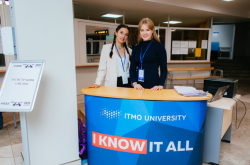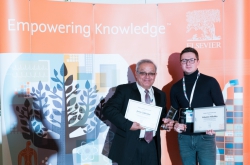Why do journals need to be included in databases?
Currently, publishing articles in scientific journals is a tool for communication between researchers and scientific centers. As any other system, modern science has to have clear and appropriate ways to measuring efficiency. Scientometrics is the study of measuring and analyzing science. It allows to assess the work of scientists, as well as make statistics of science development in centers, regions and whole countries. It is a tool for monitoring trends of the international research community.
The most well-known scientometric measurements are based on the number of articles written by scientists and the citation rate of these works. The second one is more significant, as a scientist can publish thousands of articles, but it is the citation rate that reflects the value of these works. Citing the works of colleagues is essential. It means that the author follows news in his field.
The largest scientometric data platforms are Web of Science and Scopus. They work according to similar principles — take information from journals, research works and conference digests and process it into specific data. This is called "indexing". One can index abstracts, key words, information about employment places and, most importantly, reference lists — i.e. citations and links. Thus, one forms various efficiency indexes for researchers or journals, the h-index and the Impact Factor. The higher they are, the more influential a scientist or a journal is.
Even after being included in the WoS or Scopus list, a journal can easily lose its position. Specialists constantly monitor the quality of information provided by journals. Data completeness plays the important role — if an author doesn’t give the information about, for example, the place he works at, the journal can be excluded from the list of indexed journals. The Wos includes over 12,500 journals — they constantly work on checking them so as to leave only the best ones.
As of now, scientometric measurements are often criticized. For instance, those metrics that use different databases are in doubt. However, metrics still help work on statistics of the development of science, which is used not only by research centers, but governmental organizations as well. Furthermore, specialists always improve metrics for evaluating research journals and articles. [For more information on this topic, read an interview with aElsevier S&T's consultant here -Ed.].
How ITMO’s journal got into the Web of Science
Being the world’s most reputable scientometric base, the WoS Core Collection includes only journals with a high citation index. It is very difficult to be included in it, but ITMO’s journal managed to do that. The journal publishes articles on physical, chemical and math issues related to nanosystems. It also presents the results of experiments with nanotechnologies.
The authors for the Nanosystems journal are Russian and international researchers from over 40 countries. This year, about 57% of the articles were written by foreign specialists. All of the articles presented in the journal are in English. To put an article in the journal, a researcher has to get peer-reviewed by authoritative experts in his field.
"The presence in the WoS Core Collection makes our journal more visible in the global scientific community. It becomes more attractive for researchers, especially international. Furthermore, the fact that ITMO’s journal was included in the such indexes makes the University more influential among scientific centers," says professor Igor Popov.
Yet, this achievement is by no means the journal’s overall goal. As of now, it has been included into the Emerging Sources Citation Index (ESCI), which is a subbase of the WoS. It means that the journal is only at the first level — WoS specialists continue to observe the Nanosystems as a potential candidate for the main WoS citation indexes. The Nanosystems does not have an Impact Factor yet, because journals have to be part of a database for at least three years. However, all articles published in the Nanosystems in 2016 were already included in the WoS Core Collection, so as Mr. Popov notes, the journal has two years to gain a high ImpactFactor and progress further.




